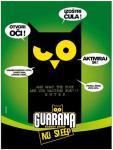O.N.- (living in Australia) I did not realise that you were getting no sun at all, so in that case and I asume that you are quite big so on your size as pman42 pointed is not really sky high; and I would asume that you may even reduce dosage eventually.
pman- I will change my earlier statement and I would say that 500 IU is high, but not sky high. I agree with your post- as for reasons for not having enough vit d trough sun- I would add that even some bathing chemicals, chlorinated water reduce absorption to zero sometimes, apparently bathing in outdoors swimming pool can prevent absorption for day or two
We need our natural oil on skin for vit d absorption, adding olive oil is good and it benefits bones more.
As for dosage I was never against multiple 1000, I said from 1000 IU to 3000 IU a day should be enough for "normal" people. Now, there are cases when people dont get sun where they can take bit more, but if they have to take a more than 5000IU- there is some underlying issue, and pumping vit d wont solve the problem. That's all.
So as conclusion I would say that considering all, I can increase my own recommended dose, somewhere between 1000- 5000 IU, all evidence suggest that adding more than that yields no more benefits, and increase some potential risks.
User Tag List
Results 31 to 40 of 44
Thread: Vitamin D Discussion
-
02-23-2013 #31A 1k Club Member Feedback Score 0




- Join Date
- Nov 2012
- Posts
- 1,026
- Mentioned
- 1 Post(s)
- Tagged
- 0 Thread(s)
Last edited by Jelisej; 02-23-2013 at 04:31 AM.
-
02-23-2013 #32A 1k Club Member Feedback Score 0




- Join Date
- Nov 2012
- Posts
- 1,026
- Mentioned
- 1 Post(s)
- Tagged
- 0 Thread(s)
OK, at last what we are all looking for (regarding vitamin d)- John Connel, MD vit d specialist and vitamin D council member. All things we discussed are here explained:
Few bits:
Studies indicate that for proper health, serum vitamin D levels should be a minimum of 50 ng/mL (125 nmol/L), with optimal levels falling between 50-80 ng/mL (125-200 nmol/L). These values apply to both children and adults.
For proper functioning, a healthy human body utilizes around 3,000-5,000 IU of vitamin D per day - indicating the current recommended intakes are not high enough to raise and/or maintain the vitamin D levels necessary for proper health.
Based on the body's indicated daily vitamin D usage, Vitamin D Council recommends the following amounts of supplemental vitamin D3 per day in the absence of proper sun exposure. Due to the variable response discussed above, these are only estimated amounts.
Healthy children under the age of 1 years – 1,000 IU.
Healthy children over the age of 1 years – 1,000 IU per every 25 lbs of body weight.
Healthy adults and adolescents – at least 5,000 IU.
Pregnant and lactating mothers - at least 6,000 IU.
Additionally, children and adults with chronic health conditions such as autism, MS, cancer, heart disease, or obesity may need as much as double these amounts.
You can start from here, and then go to any subtopic:
Vitamin D Council About vitamin D
Could any of moderators please cut out vitamin d related posts and put them in new thread, as these posts are bit off topic, and I managed to completely ruined this thread.Last edited by Jelisej; 02-23-2013 at 09:45 AM.
-
02-24-2013 #33
-
02-24-2013 #34A 1k Club Member Feedback Score 0




- Join Date
- Nov 2012
- Posts
- 1,026
- Mentioned
- 1 Post(s)
- Tagged
- 0 Thread(s)
Thamks Burly!
Few bits on vitamin D taken from jack Kruse's blog on leptin:
So anytime cellular stress is high (high HS CRP), it also forces all the hormone backbone substrate called pregnenolone to be shunted to cortisol production. This is called pregnenolone steal syndrome. What exactly does this mean, Doc? DHEA, Androstenedione, Vitamin D, testosterone, estrogen, and aldosterone production all fall dramatically. These are all of the hormones that are made from a common precursor. Remember that chronic Leptin resistance leads to huge hypercortisolism all the time!
This also means that Leptin resistance clinically will lead to low vitamin D levels. This completely explains the epidemic that John Cannell, MD is reporting about in the Vitamin D council newsletters. This in turn down regulates T regulator cells of the immune system, and it will decrease bone metabolism as well since vitamin D is a cofactor in bone metabolism. Since DHEA and Androstenedione are lowered too, the sex steroids are also lowered because they are made from DHEA and Andro. In younger humans this leads to early andropause, low libido, and early onset perimenopause any time stress is present. When this occurs in older humans, like postmenopausal women, it destroys libido and electrolyte balance (low aldosterone effects) and causes osteopenia and osteoporosis.
-
02-24-2013 #35Established Member Feedback Score 0



- Join Date
- Feb 2013
- Location
- Dudeafornia
- Posts
- 279
- Mentioned
- 0 Post(s)
- Tagged
- 0 Thread(s)
So I googled Vit D toxicity case studies, and after wasting about a half an hour I came to a few conclusions. D toxicity from supplementation seems to happen in the very old in doses waaayyyy > 50,000 IU / week and over a long period of time in the older folks. If you're healthy and not "elderly" with good kidney's it is pretty hard for it to happen.
Most of the single dose D toxicity cases are in elderly people getting bad sups with levels well into the hundreds of thousands, or little kids eating or drinking poorly fortified foods.
J you brought up Kidney stress with roids, and I think that's a good point. D supping at 5k a day would certainly increase kidney stress so that would be a concern, which it always should be anyway anyway. As for D toxicity it seems like most cycles would be over before people entered the "danger zone" of D toxicity, so that probably wouldn't happen, but who's to say really? Nobody really knows. If anyone wants to try and find out I would encourage them to post here. Just take M1T for 12 weeks and sup with 20,000 IU / day of D. Post your EKG too.
So it doesn't seem like folks are hurting themselves by supping with < 5,000 IUs / day. I personally don't think micro-managing D is going to get anybody huge, but hell if that's what you want to do it's your money.
-
02-24-2013 #36Established Member Feedback Score 0



- Join Date
- Nov 2012
- Posts
- 146
- Mentioned
- 0 Post(s)
- Tagged
- 0 Thread(s)
At the end of winter. And 1000 IU's per day of supplemental vitamin D2 or D3 raised and maintained Vitamin D levels.
J. Clin. Endocrinol. Metab., 2013
Serum Concentrations of 1,25-Dihydroxyvitamin D2 and 1,25-Dihydroxyvitamin D3 in Response to Vitamin D2 and Vitamin D3 Supplementation
Biancuzzo, RM; Clarke, N; Reitz, RE; Travison, TG; Holick, MF
Objective:The purpose of this study was to determine 1,25-dihydroxyvitamin D(3) [1,25(OH)(2)D(3)] and 1,25-dihydroxyvitamin D(2) [1,25(OH)(2)D(2)] levels in healthy adults consuming 1000 IU vitamin D(2) or vitamin D(3) per day for 11 weeks.Subjects and Design:Blood from 34 healthy male and female adults, aged 18 to 79 years, from a placebo-controlled, double-blind study who received a placebo, 1000 IU vitamin D(3), or 1000 IU vitamin D(2) daily for 11 weeks at end of winter was analyzed. Serum levels of 25-hydroxyvitamin D(2), 25-hydroxyvitamin D(3), 1,25(OH)(2)D(2), and 1,25(OH)(2)D(3) were determined by liquid chromatography-tandem mass spectroscopy.Results:Of the adults, 82% were vitamin D insufficient (serum 25-hydroxyvitamin D [25(OH)D <30 ng/mL]) at the start of the study. Administration of vitamin D(2) and vitamin D(3) induced similar increases in total 25(OH)D as well as in 25-hydroxyvitamin D(2) and 25-hydroxyvitamin D(3), respectively. Compared with placebo and adjusting for baseline levels, 1000 IU daily of vitamin D(2) was associated with a mean increase of 7.4 pg/mL (95% confidence interval, 4.4-10.3) in 1,25(OH)(2)D(2), which was accompanied by a mean decrease of 9.9 pg/mL (-15.8 to -4.0) in 1,25(OH)(2)D(3). No such differences accompanied administration of 1000 IU daily of vitamin D(3).Conclusion:Vitamin D(2) and vitamin D(3) were effective in raising and maintaining total serum concentrations of 25(OH)D. Ingestion of vitamin D(2) also resulted in an increase in serum concentrations of 1,25(OH)(2)D(2). This increase was accompanied by a comparable decrease in serum concentrations of 1,25(OH)(2)D(3); therefore, the total 1,25-dihydroxyvitamin D [1,25(OH)(2)D] concentrations did not significantly change after 11 weeks compared with baseline levels. Ingestion of vitamin D(3) did not alter serum concentrations of 1,25(OH)(2)D(3) or total 1,25(OH)(2)D. Therefore, ingestion of 1000 IU vitamin D(2) or vitamin D(3) for 11 weeks was effective in raising total serum concentrations of 25(OH)D as well as sustaining serum concentrations of total 1,25(OH)(2)D.
Address: Department of Medicine (R.T.G.T., M.F.H.), Section of Endocrinology, Nutrition, and Diabetes, Vitamin D, Skin and Bone Research Laboratory, Boston University Medical Center, Boston, Massachusetts 02118; and Quest Diagnostics Nichols Institute (N.C., R.E.R.), San Juan Capistrano, California 92675.
But it's not going to make you stronger. A new one on Vitamin D showing supplementation does not improve bench press or leg press:
Taken with fat, nah:Br J Sports Med. 2013 Feb 14. [Epub ahead of print]
The effects of vitamin D3 supplementation on serum total 25[OH]D concentration and physical performance: a randomised dose-response study.
Close GL, Leckey J, Patterson M, Bradley W, Owens DJ, Fraser WD, Morton JP.
Source
Research Institute for Sport and Exercise Sciences, Liverpool John Moores University, Liverpool, UK.
Abstract
BACKGROUND:
Vitamin D deficiency is common in the general public and athletic populations and may impair skeletal muscle function. We therefore assessed the effects of vitamin D(3) supplementation on serum 25[OH]D concentrations and physical performance.
METHODS:
30 club-level athletes were block randomised (using baseline 25[OH]D concentrations) into one of three groups receiving either a placebo (PLB), 20 000 or 40 000 IU/week oral vitamin D(3) for 12 weeks. Serum 25[OH]D and muscle function (1-RM bench press and leg press and vertical jump height) were measured presupplementation, 6 and 12 weeks postsupplementation. Vitamin D deficiency was defined in accordance with the US Institute of Medicine guideline (<50 nmol/l).
RESULTS:
57% of the subject population were vitamin D deficient at baseline (mean?SD value 51?24 nmol/l). Following 6 and 12 weeks supplementation with 20 000 IU (79?14 and 85?10 nmol/l, respectively) or 40 000 IU vitamin D(3) (98?14 and 91?24 nmol/l, respectively), serum vitamin D concentrations increased in all participants, with every individual achieving concentrations greater than 50 nmol/l. In contrast, vitamin D concentration in the PLB group decreased at 6 and 12 weeks (37?18 and 41?22 nmol/l, respectively). Increasing serum 25[OH]D had no significant effect on any physical performance parameter (p>0.05).
CONCLUSIONS:
Both 20 000 and 40 000 IU vitamin D(3) supplementation over a 6-week period elevates serum 25[OH]D concentrations above 50 nmol/l, but neither dose given for 12 weeks improved our chosen measures of physical performance.
Taking Vitamin D with fats doesn't really matter long term. New study:
J. Bone Miner. Res., 2013
Meal conditions affect the absorption of supplemental vitamin D(3) but not the plasma 25-hydroxyvitamin D response to supplementation
Dawson-Hughes, B; Harris, SS; Palermo, NJ; Ceglia, L; Rasmussen, H
It is sometimes assumed that dietary fat is required for vitamin D absorption, although the impact of different amounts of dietary fat on vitamin D absorption is not established. This study was conducted to determine whether the presence of a meal and the fat content of the meal influences vitamin D absorption or the 25-hydroxyvitamin D (25OHD) response to supplemental vitamin D(3) . Based on earlier studies in rats we postulated that absorption would be greatest in the low-fat meal group. Sixty two healthy older men and women were randomly assigned to one of three meal groups: no meal, high-fat meal or low-fat meal; each was given a monthly 50,000 IU vitamin D(3) supplement with the test breakfast meal (or after a fast for the no-meal group) and followed for 90 days. Plasma vitamin D(3) was measured by LC/MS before and 12 hrs after the first dose; plasma 25OHD was measured by radioimmunoassay at baseline and after 30 and 90 days. The mean 12-hr increments in vitamin D(3) , after adjusting for age and sex, were 200.9 nmol/L in the no-meal group, 207.4 nmol/L in the high-fat meal group, and 241.1 nmol/L in the low-fat meal group (P = 0.038), with the increase in the low-fat group being significantly greater than the increases in the other two groups. However, increments in 25OHD levels at 30 and 90 days didn't differ significantly in the three groups. We conclude that absorption was increased when a 50,000 IU dose of vitamin D was taken with a low-fat meal, compared with a high-fat meal and no meal, but that the greater absorption didn't result in higher plasma 25OHD levels in the low-fat meal group. ? 2013 American Society for Bone and Mineral Research.
Copyright ? 2013 American Society for Bone and Mineral Research.
Address: Jean Mayer United States Department of Agriculture Human Nutrition Research Center on Aging at Tufts University, 711 Washington St., Boston, MA 02111. Bess.dawson-hughes@tufts.edu.
-
02-25-2013 #37A 1k Club Member Feedback Score 0



- Join Date
- Nov 2012
- Posts
- 1,136
- Mentioned
- 0 Post(s)
- Tagged
- 0 Thread(s)
This here thread is a gem.
-
02-26-2013 #38Established Member Feedback Score 0



- Join Date
- Feb 2013
- Location
- Dudeafornia
- Posts
- 279
- Mentioned
- 0 Post(s)
- Tagged
- 0 Thread(s)
Found this at ergo-log
Suffer from continuous colds? Try vitamin D3
The purpose of the study the post sites was to see if D3 suping changes respiratory infection rates.
What is more pertinent to our discussion here is that in that study of people taking D3 @ 4,000 IU for 12 months, nobody developed D toxicity. Also, Serum D3 doubled by month 3.
The study participants all had conditions that would predispose them to respiratory infections, but nothing mentioned in the abstract seems like it would change their D absorption/metabolism/excretion that much.
-
03-04-2013 #39SwoleSource Member Feedback Score 0



- Join Date
- Nov 2012
- Posts
- 40
- Mentioned
- 0 Post(s)
- Tagged
- 0 Thread(s)
ive mostly done 5k a day- in winter ill go 10k per day if i feel a bug coming on..in summer, maybe 2k a day. i work indoors.
mark bell posted something about him using like 50k all the time ( i could be off a bit, but it was way high )
-
03-05-2013 #40





 Reply With Quote
Reply With Quote





